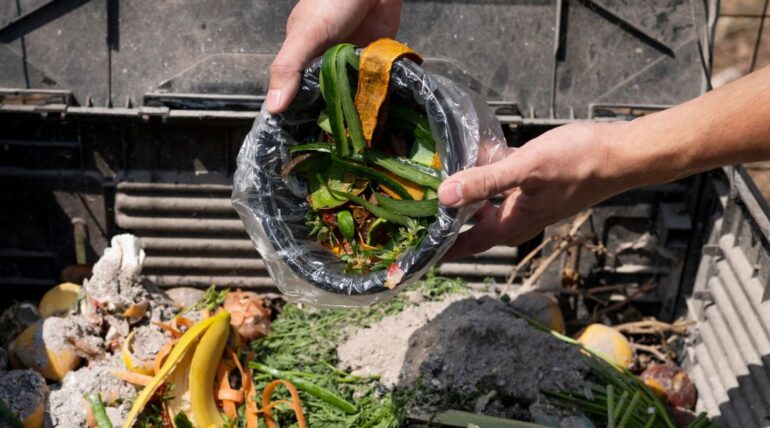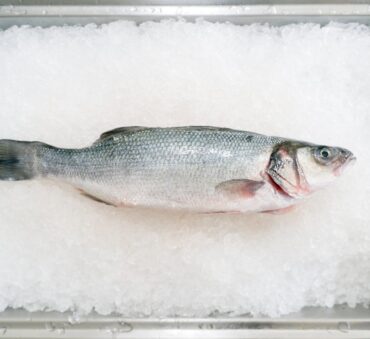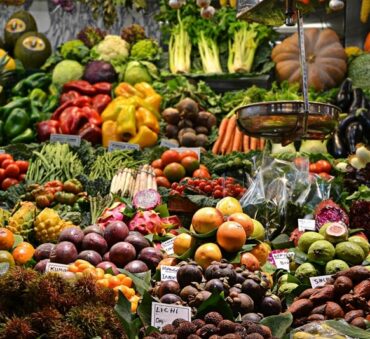The current food waste crisis has become so significant that the U.S. has publicly announced a goal to cut food loss and waste in half by the year 2030. Working towards this goal requires innovative strategies that support long-term sustainability, providing benefits for both businesses and individuals.
Effective food waste disposal techniques have emerged as a strategy to mitigate the environmental, economic, and social consequences of food waste. As we’ll explore in this article, every person, business, and organization are responsible for the sustainable disposal of food waste, with solutions ranging from improved inventory management, at-home recycling, and donating surplus food, among others.
Key Takeaways
- Improper food waste disposal causes complex environmental, economic, and social implications, including the production of greenhouse gas emissions, the depletion of natural resources, financial losses throughout the supply chain, and increased food insecurity.
- Preventing waste is the top priority for the United States Environmental Protection Agency. Prevention techniques include improving inventory management, enhancing food storage and transportation logistics, partnering with food rescue organizations, meal planning, buying imperfect produce, and having a better understanding of expiration dates.
- Recycling is a sustainable food waste disposal method that reduces landfill use, helps businesses meet legal obligations, and turns food waste into valuable resources. Recycling methods include composting, anaerobic digestion, and turning food waste into animal feed.
- Proper food waste handling and storage prevents health hazards, odors, and pest attraction, making it a key concern for both commercial and residential settings. Safety precautions include keeping food waste separate from other types of waste, using designated waste containers, and keeping storage areas sanitized.
Understanding the Significance of Proper Food Waste Disposal
Food waste is a complex issue that has multifaceted consequences, one of which is food waste’s effects on the environment. This includes its role in air and water pollution, the depletion of natural resources, the degradation of land, and the loss of biodiversity. However, one of the most concerning consequences is its contribution to climate change.
When food waste is sent to landfills, it undergoes a decomposition process that produces methane emissions, a powerful greenhouse gas known for its heat-trapping properties. In fact, an estimated 8-10% of global greenhouse gas emissions are associated with food that is not consumed.
In addition, there are economic consequences of food waste, which annually costs the United States an estimated $218 billion, or 1.3% of GDP. These financial losses are experienced throughout the entire supply chain, demonstrating the inefficiency of our current food system.
Food loss and the misuse of resources also contribute to a larger social issue, as millions of people in the United States and around the world are currently facing food insecurity. To bridge the gap between food waste and hunger, increased food donation initiatives are required to reduce food waste at the source, while proper food waste disposal reduces its environmental and economic impact.
Commercial Food Waste Disposal Guide
How to dispose of food waste?
As we’ll discuss below, businesses that want to create sustainable solutions to food waste should follow the following steps: plan, prevent, recycle, and follow regulations.
Assessment and Planning
In order to create an effective food waste disposal strategy, businesses must have a clear understanding of how much waste is generated throughout the supply chain. By performing a food waste audit, businesses can identify waste streams, as well as how much and what type of waste is being generated.
This information is key to developing strategic plans tailored to a business’ specific needs. Based on the results of the food waste audit, companies can create measurable waste management goals that they can track over time.
Prevention Before Disposal
The EPA’s wasted food scale puts prevention as the top priority, encouraging businesses and individuals to only produce, buy, and serve what is required. There are multiple ways that businesses can reduce the amount of waste they produce, including:
- Improving inventory management: More efficient inventory management systems help businesses accurately track inventory levels and demand patterns, leading to less waste, cost savings, and addressing the issue of overproduction.
- Training employees: All employees should be trained in proper handling skills and portion control to reduce waste and increase awareness of the food waste crisis. By getting everyone in the company involved, there’s a better chance of success when implementing company-wide initiatives.
- Collaborating with food rescue organizations: Donating surplus food helps minimize food waste, offers potential tax deductions, and reduces food insecurity in your community. Creating local partnerships helps hold your company accountable and ensures that surplus food reaches those in need.
- Enhancing food storage and transportation logistics: Improper food storage and transportation can cause perishable foods to deteriorate more rapidly. The adoption of food waste technology helps companies monitor temperature and humidity levels to prevent waste.
Recycling and Recovery
Recycling reduces landfill use, helps businesses meet legal obligations, and turns food waste into valuable resources, making it an increasingly popular method of commercial food waste disposal. There are multiple food waste recycling strategies that companies can explore, including composting, anaerobic digestion, and turning food waste into animal feed.
Companies may choose to integrate these systems into their everyday operations by having on-site recycling, or they can opt to collaborate with food waste management companies to streamline the entire process. The advantage of seeking waste disposal services is that they offer tailored solutions, allowing companies to easily integrate new recycling methods that match their requirements and objectives.
Following Regulations and Laws
To comply with legal obligations and optimize tax incentives, businesses must be fully aware of national and state-wide food waste regulations. Since laws vary among states and cities, some states may have more progressive laws than others, such as making it mandatory to donate edible food to food recovery organizations or banning the disposal of food scraps in the trash or landfills.
There are also national laws that help promote food waste reduction efforts. The Bill Emerson Good Samaritan Food Donation Act, for instance, encourages donations by protecting donors from liability, while the Resource Conservation and Recovery Act gives the EPA the authority to control hazardous waste, including its generation, transportation, treatment, storage, and disposal. These acts are great examples of regulations that promote waste minimization, recycling, and resource recovery.
Since laws and regulations vary, one way to stay up to date with requirements and incentives is to partner with an experienced waste management company. They’ll guide you through proper waste management practices, ensure you’re complying with local laws, and create solutions based on your unique goals.
A Guide to Food Disposal at Home
Food waste disposal at the consumer level differs from commercial disposal methods and strategies. Keep reading to learn how households can prevent waste, use their garbage disposal more efficiently, and improve their recycling and donation efforts.
Prevention at the Source
There are many strategies that households can use to prevent food waste, including:
- Meal planning: Overconsumption and overproduction are huge contributors to waste throughout the supply chain. When families use meal planning to purchase only what is required, they reduce household waste and enjoy cost savings.
- Buying imperfect produce: High aesthetic standards for produce result in large amounts of ugly fruits and vegetables food waste being discarded. Buying imperfect produce helps reduce waste and sets new expectations in the supply chain, encouraging manufacturers and retailers to adjust strict grading and sorting processes and minimize the amount of waste sent to landfills.
- Understanding expiration dates: Misunderstandings of expiration dates cause many healthy products to be thrown away before expiration. By paying attention to the expiration dates to reduce food waste, consumers can distinguish between different labels while educating themselves on how to identify if a product is spoiled.
- Improving storage techniques: Proper storage techniques help prolong the life of food at home, therefore reducing waste and minimizing the economic impact of buying products that are never consumed.
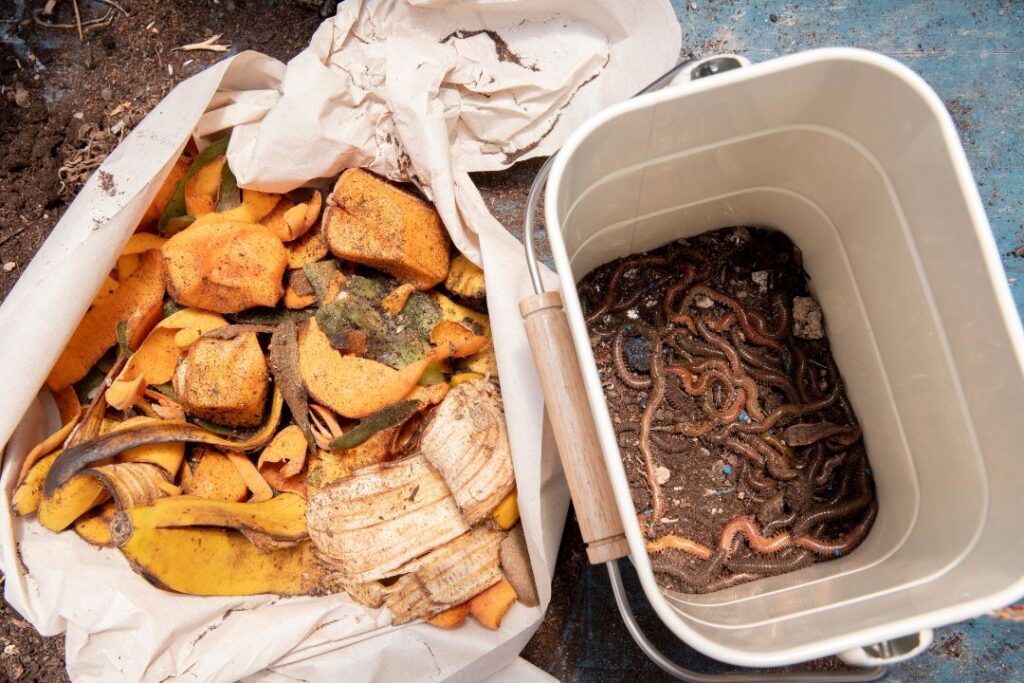
Understanding Your Garbage Disposal
Garbage disposals are used to manage food scraps but are not considered the most sustainable method of food waste disposal. This is because the “out of sight, out of mind” mindset can influence households to rely heavily on garbage disposal rather than prioritizing methods that reduce waste or promote a circular economy. That said, households should be aware of what can and cannot be sent down garbage disposals.
Foods that can be sent down garbage disposals include:
- Soft foods and liquids
- Small food scraps, including fruit, vegetables, cooked meat, and leftovers
- Biodegradable materials that break down easily
- Ice
Foods that should not be sent down garbage disposals include:
- Fibrous materials like celery and corn husks
- Hard materials like bones and fruit pits
- Non-food items and hazardous materials
- Fats, oils, and greasy substances that clog pipes, which include disposing of cooking oil, disposing of bacon grease, and disposing of cooking grease
Recycling of Food Waste at Home
There are many ways households can improve their recycling efforts, with composting being a great option to reduce personal food waste. To recycle organic food waste into compost at home, all you have to do is build a compost pile with alternating layers of green materials (food scraps) and brown materials (leaves or shredded paper) and keep the pile moist to produce quality compost.
Vermicomposting is an alternative strategy for those with limited backyard space that involves using red worms to break down food scraps.
Families should also evaluate what local solutions are available to them, with an increasing number of local composting facilities and community initiatives being implemented around the United States. These initiatives empower neighborhoods to get involved, which not only raises awareness but also offers an easy solution for families who do not have the space to do it themselves.
Donation and Sharing
Donating surplus food is a great way to support your community and help put food on the table for those in need. To get involved, you can participate in community sharing initiatives like food swaps and community fridges. There are also food waste apps that connect you to nonprofit organizations to ensure your donations reach those in need.
When donating food, make sure to use safety precautions, which include keeping food in securely sealed packages, keeping it at the proper temperature to prevent spoilage, and avoiding foods that were cooked at home or show signs of spoilage. You should also familiarize yourself with food donation regulations, as laws may vary between cities and states.
Safety Concerns of Food Waste Disposal
Proper handling and storage prevent health hazards, odors, and pest attraction, making it a key concern for both commercial and residential settings. Safety and health precautions include keeping food waste separate from other types of waste, using designated waste containers, and storing food in airtight containers. Regularly removing food waste from storage areas and keeping storage areas sanitized is also crucial to maintaining cleanliness and preventing contamination.
In-depth employee training also helps ensure healthy disposal of food waste while emphasizing safety procedures to prevent injuries. This includes comprehensive training for operating disposal equipment like garbage disposal and composters and conducting regular maintenance to ensure a safe disposal process.
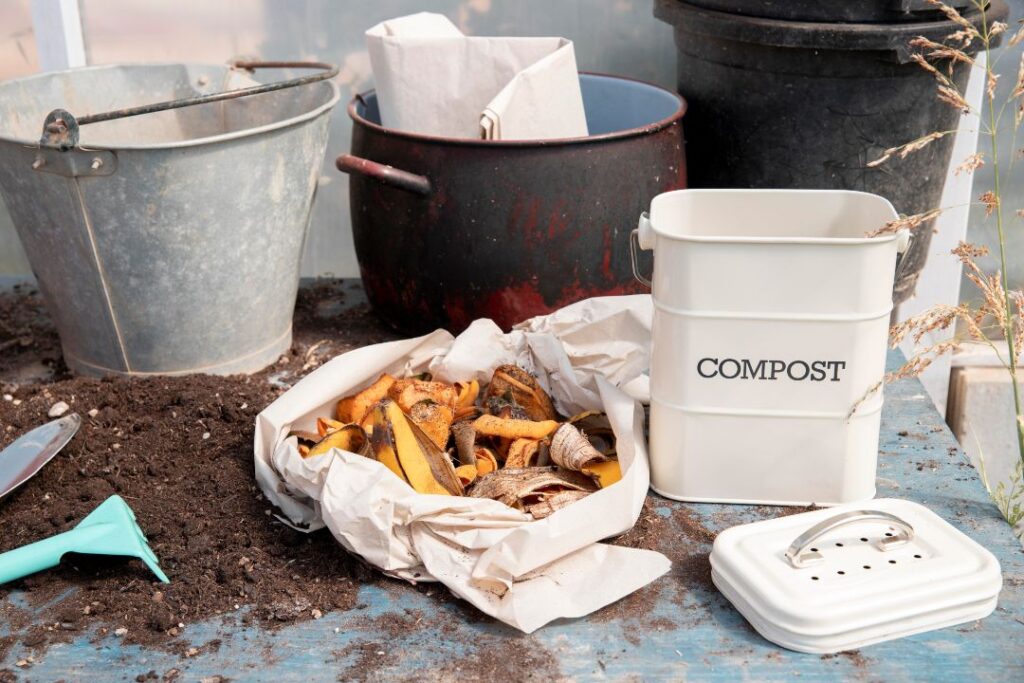
Technological Innovations in Food Waste Management
Food waste management technology has made huge strides in improving sustainability practices, working to optimize food waste tracking, predict waste generation patterns, and automate aspects of waste management. The emergence of AI and IoT has been especially important in helping monitor and manage food waste.
An increasing number of businesses are using AI to reduce food waste due to its role in improving supply chain management. Predictive analytics enable these systems to predict future trends and events, helping to align production and supply with consumer demand and ultimately reduce food waste at the source.
Food waste apps are also increasingly popular in both households and organizations, which contribute to sustainability goals by monitoring, reducing, and managing waste. There are a number of applications available, including grocery shopping apps, apps that help businesses manage inventory to prevent spoilage, community sharing platforms, and more.
Both businesses and households can leverage new technologies, whether to reduce at-home waste or enhance operational efficiency. Depending on the specific needs of each household and organization, there are different tools that are tailored to unique challenges and objectives.
The Bottom Line
Both businesses and households should prioritize the sustainable disposal of food waste, making way for reduced landfill use and providing a variety of environmental, economic, and social benefits.
To optimize food waste disposal efforts, businesses should partner with an experienced food waste management company. At Shapiro, we provide environmentally friendly waste management services that are compliant, sustainable, and don’t disrupt your day-to-day business operations.
Contact us to learn more about our organic waste management services.
Baily Ramsey, an accomplished marketing specialist, brings a unique blend of anthropological insight and marketing finesse to the digital landscape. Specializing in educational content creation, she creates content for various industries, with a particular interest in environmental initiatives.
